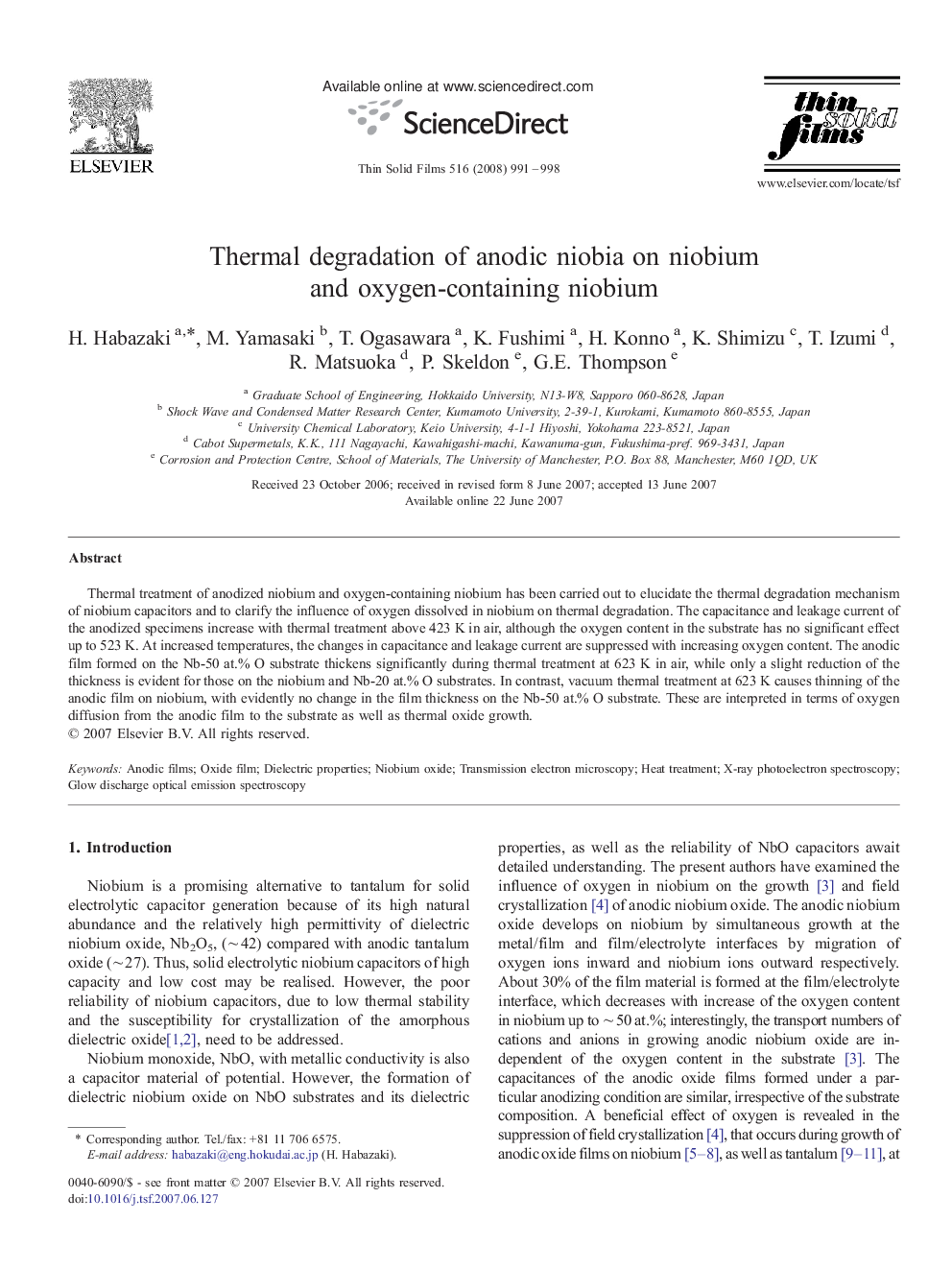| Article ID | Journal | Published Year | Pages | File Type |
|---|---|---|---|---|
| 1675755 | Thin Solid Films | 2008 | 8 Pages |
Thermal treatment of anodized niobium and oxygen-containing niobium has been carried out to elucidate the thermal degradation mechanism of niobium capacitors and to clarify the influence of oxygen dissolved in niobium on thermal degradation. The capacitance and leakage current of the anodized specimens increase with thermal treatment above 423 K in air, although the oxygen content in the substrate has no significant effect up to 523 K. At increased temperatures, the changes in capacitance and leakage current are suppressed with increasing oxygen content. The anodic film formed on the Nb-50 at.% O substrate thickens significantly during thermal treatment at 623 K in air, while only a slight reduction of the thickness is evident for those on the niobium and Nb-20 at.% O substrates. In contrast, vacuum thermal treatment at 623 K causes thinning of the anodic film on niobium, with evidently no change in the film thickness on the Nb-50 at.% O substrate. These are interpreted in terms of oxygen diffusion from the anodic film to the substrate as well as thermal oxide growth.
